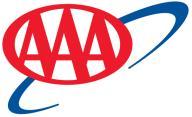AAA Offers Consumer Checklist For Getting Quality Auto Repair
 |
ORLANDO, Fla., Oct. 10, 2008 - Auto repair questions create major headaches for consumers, often causing motorists to dread taking their vehicle in for service.
Which shop should I go to? Can I trust them? Will the repairs be done right? How much will it cost?
In fact, AAA research shows roughly one out of 10 consumers was dissatisfied in their most recent visit to a repair facility, with the biggest complaints being:
-- Inability to fix problems on first visit. -- Inability to diagnose problems properly. -- Work took too long. -- Low quality work.
"Many disputes between consumers and repair shops are the result of misunderstandings over what was supposed to be repaired and what was actually done," said John Nielsen, director, AAA Approved Auto Repair Network.
To help ensure consumers receive reliable, quality auto repair service, AAA recommends motorists use the following checklist--
Determine what type of repair facility is needed. Most vehicles can be repaired and maintained by a full-service repair facility, but if there is a major problem with a specific vehicle system, a shop specializing in that area might be the best choice. Vehicles still under warranty typically must be repaired by the dealer.
Select a repair facility you trust. Friends, relatives and co-workers are a good source of recommendations. Also, consumers can look for one of the more than 8,000 AAA Approved Auto Repair facilities in the U.S. and Canada. Since 1975, AAA has certified repair shops as a public service. To qualify, facilities must meet and maintain stringent standards for service, training, cleanliness and equipment. AAA also regularly surveys shops' repair customers to ensure ongoing high customer satisfaction. To locate a AAA-approved facility, visit AAA.com/Repair.
Make an appointment. If the facility manager knows a motorist is coming and has a rough idea of the problem, the right technician can be assigned to the job and allowed enough time to get it done properly.
Describe the problem. Don't tell the technician what needs to be repaired or replaced unless it's obvious. Instead, describe the problem and its symptoms, and let the technician determine the appropriate solution.
Read the repair order. Be wary of blanket statements such as "check and correct transmission noise" or "fix engine;" They could result in an unexpected and costly major repair. And never sign a blank repair order or tell the shop to "just fix it" or "do what's necessary" unless the problem is covered under warranty.
Get a written estimate. Oral estimates can be disputed or forgotten. Always ask for a written estimate prior to approving work on your vehicle.
Insist on a call if repair costs will exceed the estimate. Predicting exact repair costs can be difficult, so most written estimates allow up to a 10 percent overrun. However, motorists should make sure it's written on the repair order they want to be called if the costs will exceed this allowance.
Carefully consider add-on repairs. If the repair facility calls to say a different part of the vehicle also needs work, it may be best to defer those repairs until a later visit unless the shop can provide clear justification for making them immediately. Don't hesitate to get a second opinion if the extra work does not appear warranted.
Ask for replaced parts. When dropping their vehicle off for service, consumers should tell the shop they will want to see any replaced parts. Consumers are also entitled to keep those parts, unless the facility must return them under a warranty or exchange program. Replaced parts and a well-documented repair order can be useful if there is a problem later.
Take a test drive. If a problem remains or the vehicle does not run properly after it's picked it up, don't go home. Return to the shop immediately. If a problem arises after leaving the shop, make an appointment to bring the vehicle back as soon as possible.
Get a detailed copy of the repair order. Make sure it specifies the costs of labor and each part. Ask for the facility's warranty in writing it it's not printed on the bill. AAA Approved Auto Repair facilities offer a minimum 12-month/12,000-mile warranty.
As North America's largest motoring and leisure travel organization, AAA provides more than 51 million members with travel, insurance, financial and automotive-related services. Since its founding in 1902, the not-for-profit, fully tax-paying AAA has been a leader and advocate for the safety and security of all travelers.


